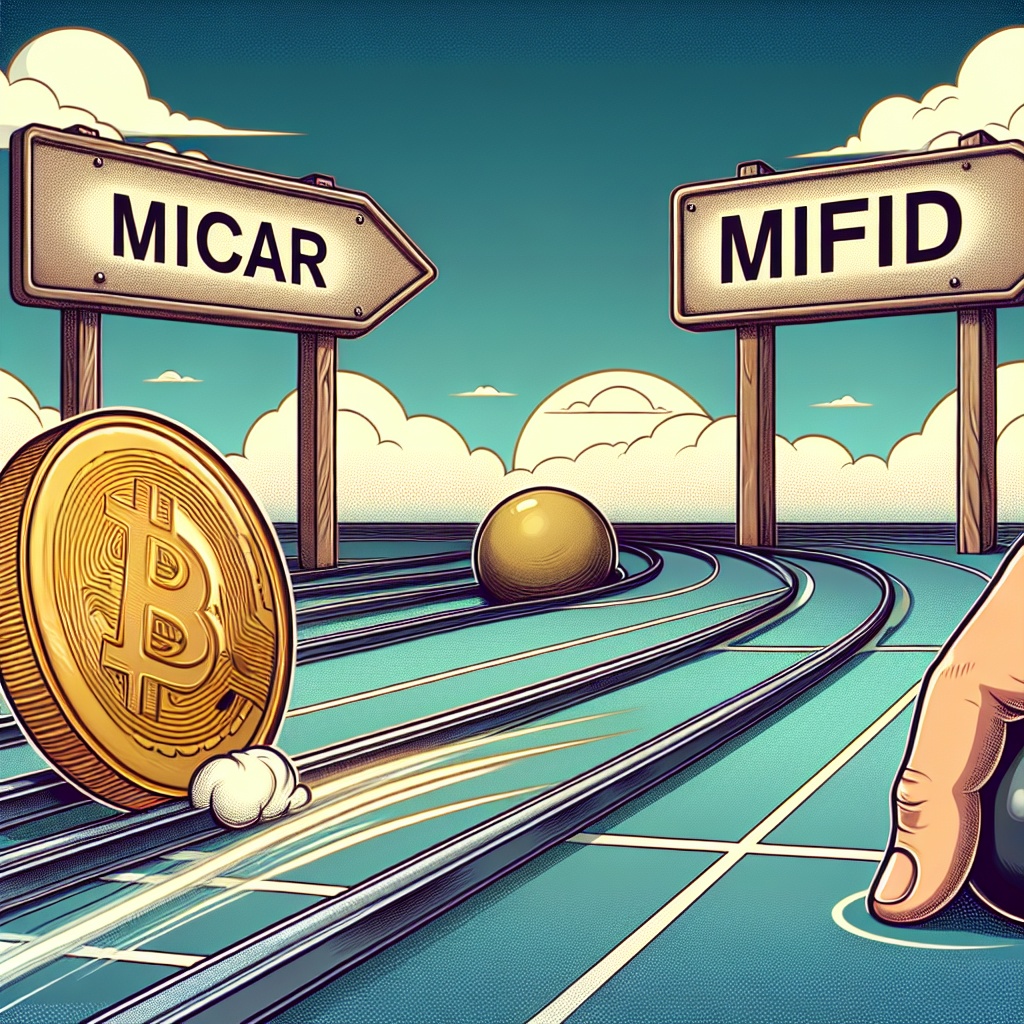Obligations under the EU Regulation on Markets in Crypto Assets (MiCAR) generally only arise for market participants if they carry out or plan to carry out activities involving or related to crypto assets. The regulator has defined crypto assets very broadly in MiCAR. According to this definition, crypto assets are essentially any digital representation of value or right that can be transferred and stored electronically using distributed ledger technology or similar technology. However, the provisions of MiCAR are not always applicable once the criteria of the definition of crypto assets are met. This is because Art. 2 MiCAR provides for a number of exceptions in this respect. One of the most relevant exceptions is provided for in Art. 2(4)(a) MiCAR for crypto assets that qualify as financial instruments within the meaning of MiFID2, i.e., the EU Directive on Markets in Financial Instruments. If the exception applies because a crypto asset is classified as a financial instrument within the meaning of MiFID2, MiCAR does not apply in any part, according to the clear wording of Article 2(4) MiCAR. But under what exact circumstances is a crypto asset to be regarded as a financial instrument?
ESMA Publishes Guidelines on the Distinction Between Crypto Assets and Financial Instruments
On 17 December, 2024, ESMA published the final version of its guidelines on the conditions and criteria for classifying crypto assets as financial instruments, the draft of which it had previously submitted to market participants for consultation. ESMA was required to publish these guidelines pursuant to Article 2(5) MiCAR. Essentially, ESMA instructs Member States, competent authorities, and market participants to apply the “substance over form” principle when assessing whether a crypto asset qualifies as a financial instrument. Accordingly, the legal classification of a crypto asset is not determined by the form in which it appears on the market, its name or the promises associated with it, but rather by its inherent characteristics. The legal assessment should also be based on a technology-neutral approach to ensure that crypto assets of any technical design can fall under the MiCAR definition of crypto assets, regardless of any future technical developments. ESMA considers it problematic that the term “financial instrument” is not defined uniformly for the entire EU, but that there is only a list of examples of financial instruments in the form of an EU directive implemented by the member states, leaving member states the option of creating additional categories of financial instruments at the national level. Examples under German law include, in particular, units of account and, for example, investments under the German Assets Investment Act (Vermögensanlagengesetz). It is precisely such national legal forms of financial instruments, but also hybrid crypto assets that combine several functions, that make it difficult in individual cases to answer the question of whether they – if tokenized – fall under MiCAR as crypto assets or under MiFID regulation as financial instruments.
When Does ESMA Consider a Crypto Asset to Be a Financial Instrument?
Annex I Section C to MiFID2 contains a list of instruments that qualify as financial instruments within the meaning of the Directive. According to this, transferable securities in particular, but also money market instruments, units in investment funds, options, derivatives and CFDs, as well as emissions certificates, are financial instruments within the meaning of MiFID2. Essentially, ESMA expects the competent supervisory authorities and other legal practitioners, in line with the “substance over form” approach, to check whether the instrument in question is tradable on the capital markets when assessing whether a crypto asset qualifies as a transferable security, when it does not constitute a payment instrument and is also fungible and embodies rights similar to those of securities, as is usually the case with shares, debt instruments, and other securities. Tradability is given if the crypto asset can be freely traded and transferred. According to the ESMA guidelines, crypto assets that are used as a means of exchange are considered payment instruments. Voting rights associated with crypto assets should only be considered similar to securities if they enable genuine participation in corporate decisions (e.g., election of the board of directors, approval of transactions, etc.), but not if they merely entitle the holder to participate in votes on technical aspects, protocol upgrades, or fee adjustments. For hybrid crypto assets that fulfill the characteristics of a financial instrument but also have other functions, such as an access authorization function, the financial instrument characteristic of the instrument in question should take precedence in accordance with the ESMA guidelines.
Attorney Dr. Lutz Auffenberg, LL.M. (London)
subscribe to Newsletter






